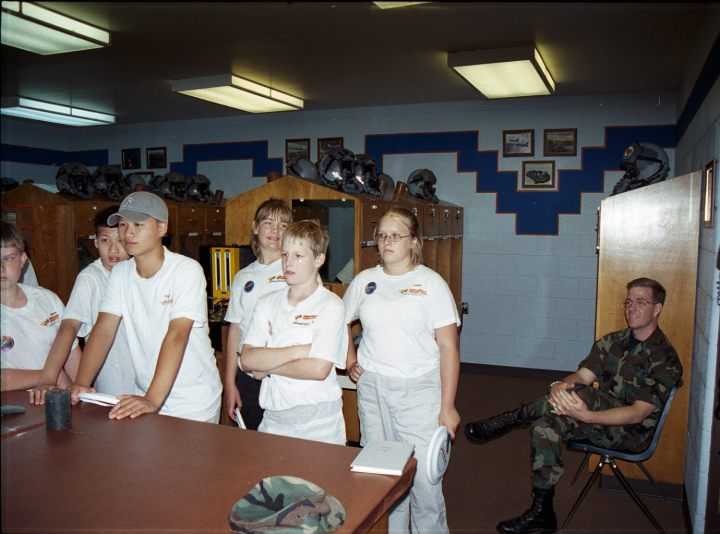|
Visiting the Air National
Guard
183rd Fighter Squadron, 6-12-2000
Springfield, IL.

Sgt. Maliongas explains how 'G' forces work.
When a pilot turns his plane he is pushed into the seat very hard.
His weight increases a tremendous amount. When he is at one "G" he
feels the same as we do when we are standing here. If he weighs 150lbs,
when a one 'G' force is applied he still weighs 150lbs. G forces
are the forces of gravity. When the pilot makes an easy turn, say
a two G turn, his weight increases from 150lbs to 300lbs. These planes
have the capability of turning very hard, up to 9 G's. At 9 G's a
150lb pilot would weigh 1350lbs. The blood in his head all tries
to go to his feet. He at first starts to get tunnel vision then he
passes out. To prevent this the pilot wears a G-Suit. When
the plane makes a turn over two G's the G-suit starts to inflate with air
squeezing his legs and abdomen squeezing the blood back to his head.
The G-Suit is worn over the flight suit. It is made of air bladders
that are controlled by a computer in the F-16 Falcon. The G-Suit
fits over the pilots legs and over his abdomen. This is an essential
part of the pilots life support equipment, if he didn't have one, he would
die.
Another part of Sgt. Maliongas' talk was about the ejection seat.
He explained the difference between the old seats and the new ones.
The ejection seat protects the pilot when he leaves the aircraft in an
emergency. In the bottom of the seat is a rocket motor. When
the pilot pulls the ejection handle the rocket motor fires and shoots the
pilot out of the airplane very quickly.
The ejection seat also carries life support equipment for the pilot,
namely a parachute. It also protects the pilot against the high speed
air blast when the pilot leaves his airplane. |



